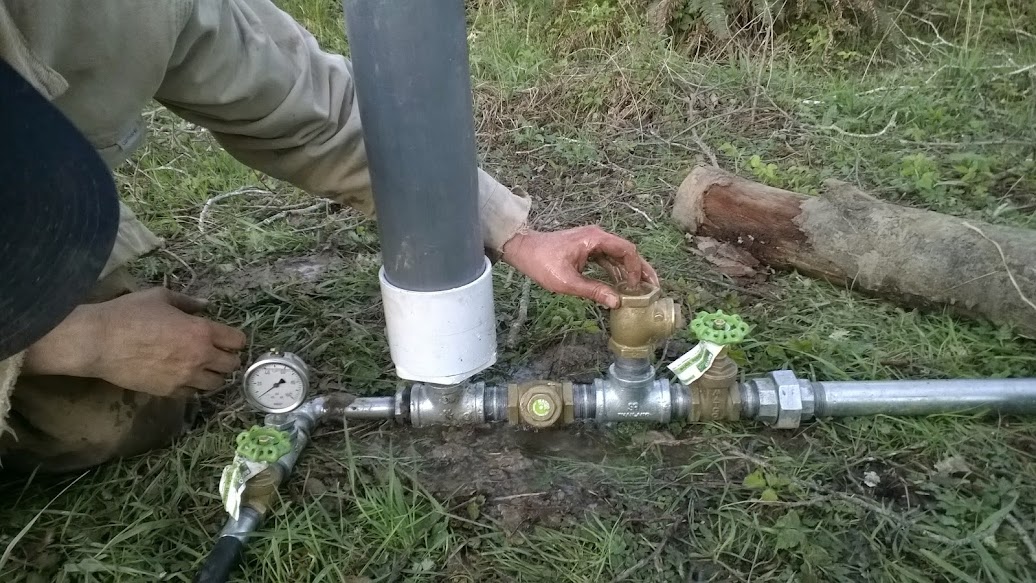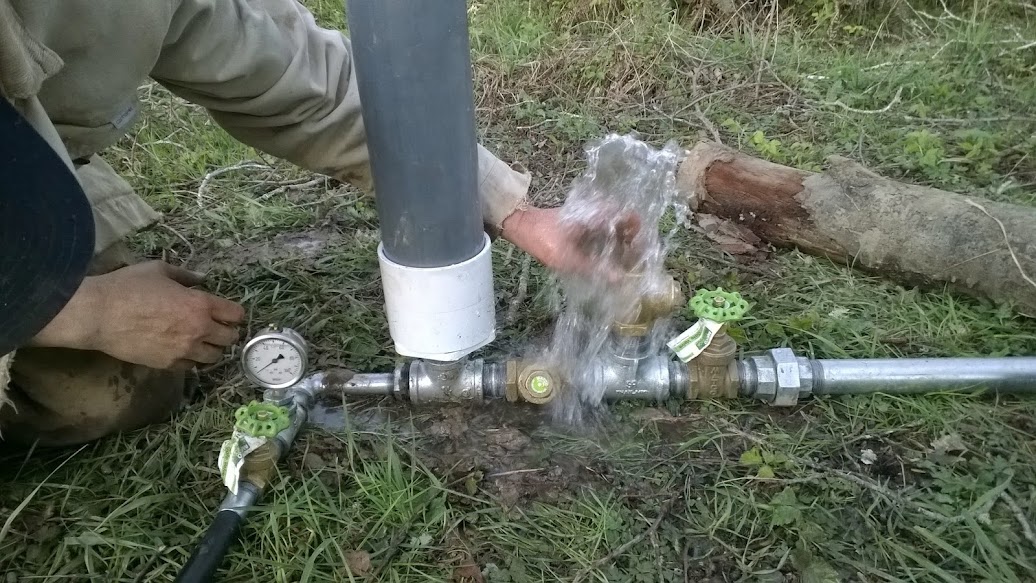


|
Commenced:
|
01/09/2012 |
|---|---|
|
Submitted:
|
23/09/2013 |
|
Last updated:
|
07/10/2015 |
|
Location:
|
Rochester WA, WA, US |
|
Climate zone:
|
Cool Temperate |
(projects i'm involved in)
Project: Le Petit Canard Farm
Posted by Laurie Branson over 10 years ago
Last year we suffered through pumping water from a spring and pond into water totes and a 3000 gallon cistern at the top of our property using a little 12 volt pump. It required lugging a heavy battery up the hill, priming it by pouring a gallon or two of water down the hose, dipping it in the pond, and repeating until it started sucking water.
Even after it was pumping, the flow wasn't huge. We could pump about 375 gallons per fully charged battery up the hill. Then we had to lug the battery back down the hill and charge it on our solar panel - which usually took a day. If only there was a way to do this without power...
To be clear - the incoming flow to our pond is a steady trickle, not a full stream - and it was dried up by August. We are hoping our recent digging effort to increase the pond depth and width will keep it going until the rainy season starts.
Then we discovered the Hydraulic Ram Pump and some really great YouTube videos. This guy explains it in a three part series very well and shows how to assemble it from parts you can get from a plumbing store. Don't waltz into Home Depot and expect to everything you need though. We had to go to a few places to get all of the parts. Although key components needed to be purchased at a professional plumbing store, they generally sell 20 foot lengths of pipe that need to be threaded. Luckily we were able to find threaded 10 footers at Home Depot.
Now for the hard part. We had a to drive a 10 foot glavanized pipe horizontally through 9 feet of packed clay and come out of the inner pond wall in the right spot. We used a T-post driver and a whole lot of muscle. It took several hours.


Once we got the pipe through the pond wall, we assembled the rest of the pump. The compression tube gets fitted with a semi-inflated bicycle tube. This helps keep an air pocket in the compression chamber.

As the pump fills the chamber, it compresses the air and when it reaches the point that it pushes the water uphill, it begins compressing again.

The two swing check valves keep water flowing in the direction we want.

Starting the pump is just a matter of tapping the first check valve open, then monitoring the pressure until it passed 20 psi.

It pumps water uphill through 100 feet of hose into our cistern. The overflow goes into our swale, which eventually recharges the groundwater which is what the spring was doing further down the hill.

We installed a screen on the end of the pipe to avoid sucking up the flora and fauna that have found our little pond.

Now that it is humming along, we don't have to do anything. It just keeps on pumping. Uphill. Without power.
You must be logged in to comment.


Note: The various badges displayed in people profiles are largely honesty-based self-proclamations by the individuals themselves. There are reporting functions users can use if they know of blatant misrepresentation (for both people and projects). Legitimacy, competency and reputation for all people and projects can be evidenced and/or developed through their providing regular updates on permaculture work they’re involved in, before/after photographs, etc. A spirit of objective nurturing of both people and projects through knowledge/encouragement/inspiration/resource sharing is the aim of the Worldwide Permaculture Network.
 |
MemberA member is a permaculturist who has never taken a PDC course. These cannot become PDC teachers. Members may be novice or highly experienced permaculturists or anywhere in between. Watch their updates for evaluation. |
|---|---|
  |
Permaculture MatchmakerOne of these badges will show if you select your gender and the "I'm single, looking for a permaculture partner" option in your profile. |
 |
PDCPeople who claim to have taken a Permaculture Design Certificate (PDC) course somewhere in the world. |
 |
PDC VerifiedPeople who have entered an email address for the teacher of their PDC course, and have had their PDC status verified by that teacher. Watch their updates for evaluation. |
 |
PRI PDCPeople who’ve taken a Permaculture Research Institute PDC somewhere in the world. |
 |
PDC TeacherPeople who claim to teach some version of PDC somewhere in the world. |
 |
PRI TeacherWith the exception of the ‘Member’ who has never taken a PDC, all of the above can apply to become a PRI PDC Teacher. PRI PDC Teachers are those who the PRI recognise, through a vetting board, as determined and competent to teach the full 72-hour course as developed by Permaculture founder Bill Mollison – covering all the topics of The Designers’ Manual as well as possible (i.e. not cherry picking only aspects the teacher feels most interested or competent in). Such teachers also commit to focussing on the design science, and not including subjective spiritual/metaphysical elements. The reason these items are not included in the PDC curriculum is because they are “belief” based. Permaculture Design education concerns itself with teaching good design based on strategies and techniques which are scientifically provable. PRI PDC Teachers may be given teaching and/or consultancy offerings as they become available as the network grows. |
 |
Aid WorkerThe individual with this badge is indicating they are, have, or would like to be involved in permaculture aid work. As such, the individual may or may not have permaculture aid worker experience. Watch their updates for evaluation. |
 |
ConsultantThe individual with this badge is indicating they are, have, or would like to do paid permaculture design consultancy work. As such, the individual may or may not have permaculture consultancy experience. Watch their updates for evaluation. |
 |
Community ProjectCommunity projects are projects that help develop sustainable community interaction and increase localised resiliency. |